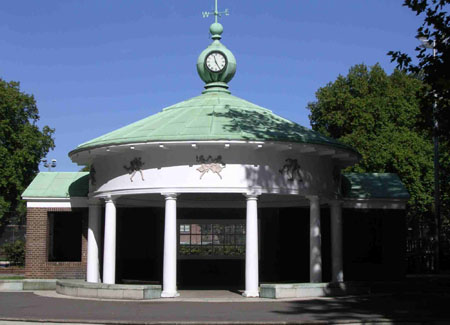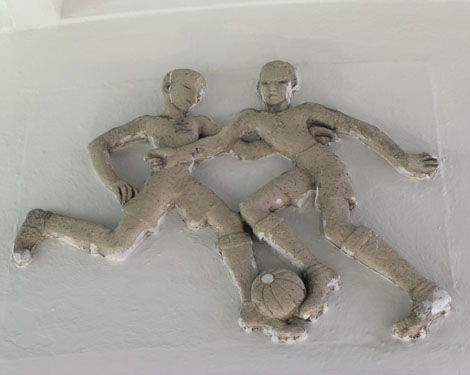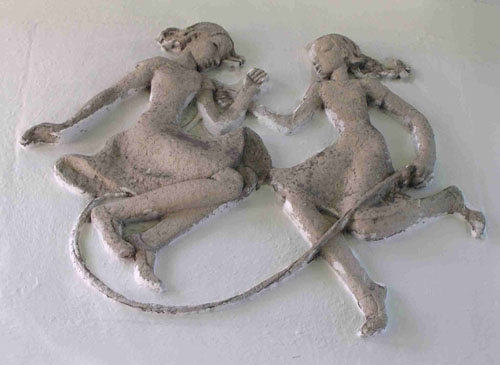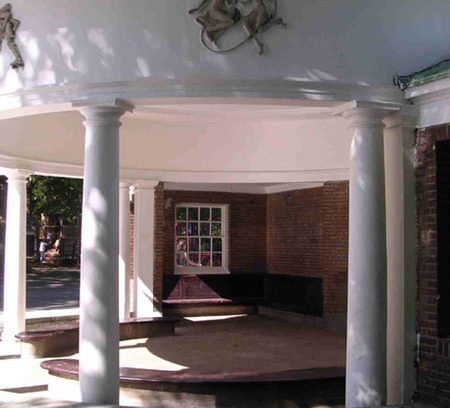This website uses cookies
This website uses cookies to enable it to function properly and to analyse how the website is used. Please click 'Close' to accept and continue using the website.






September 2004 - Coram’s Fields, Bloomsbury
The reopening of the Thomas Coram Foundation earlier this year drew attention to the important civic and artistic history of the Foundling Hospital. Sadly, the original building of 1742 by Theodore Jacobsen was demolished soon after the site was sold to a business syndicate in 1926. For nearly ten years, different ideas were put forward for new uses for this oasis in an intensely populated part of the city, including a new Covent Garden market, a new Olympia, cheap flats, or the headquarters of London University. In 1929, Lord Rothermere acquired an option to buy the site, and a children’s playground was built, but two years later he declined to pay more than £50,000 of the asking price of £425,000. The architectural editor of , Christopher Hussey, roused public interest with an article in , claiming that it was a symbolic scene ‘of a decisive action between the forces of sanity, order and civilisation on the one hand, and of that hugger-mugger commercialism that on every front is losing England her prosperity, her dominance, her beauty.’ In fact, the battle for Coram’s Fields seems to have been an issue of commitment to civilisation.
Two large gaps were made in the front wall in Guildford Street , preparatory to the formation of new roads, but after the money was raised to save the playground, the architect Leonard Holcombe Bucknell (d. 1963) was appointed in 1934 to fill in the gaps and convert other buildings as halls for scouts and guides. The low existing colonnades of the rope walks on either side of the enclosed central space, with their stubby Tuscan columns had for Bucknell ‘a curious quality of charm’ and he worked in the spirit of simplified classicism, so that his additions cannot be dated to the twentieth century at all. On the axis of Lamb’s Conduit Street, however, he was able to make a more personal contribution, with a central pavilion, completed in 1936, commemorating Lord Rothermere’s donation in memory of his two sons killed in the First World War. This is one of the most successful small classical buildings of its period, with a widely spaced Roman Doric hemicycle, and a copper roof with a bulbous finial for the clock. The low reliefs, by the former Rome Scholar, Marjorie Meggitt, show modern children playing games. This building can normally only be enjoyed at a distance, since adults unaccompanied by children are not allowed into Coram’s Fields.
While it is clearly from a different hand to the work of Raymond Erith, the modern classicist whose career is the subject of an exhibition at the Soane Museum this autumn, Bucknell’s pavilion shows that there were other designers interested in reinterpreting the simpler classical forms in a spirit congenial to the 1930s. Bucknell spent much of his life teaching at the Architectural Association, and was not a prolific architect. With his wife, a former AA student, Ruth Ellis, he did some minor modern works, including the interior of a shop on the corner of Great Russell Street and Bloomsbury Way, originally for Dryad Handicrafts, some elements of which have survived several changes of user.
Coram’s Fields are at 93 Guildford Street, London WC1N 1DN. Adults are only admitted if accompanied by a child. Open daily, Easter – October 09:00 – 20:00, November – March 09:00 – dusk. The exhibition ‘Raymond Erith 1904-1973: Progressive Classicist’ will be on show at Sir John Soane’s Museum, 13 Lincoln’s Inn Fields, London WC2A 3BP from 8 October – 31 December 2004
Look for past Buildings of the Month by entering the name of an individual building or architect or browsing the drop down list.

Become a C20 member today and help save our modern design heritage.